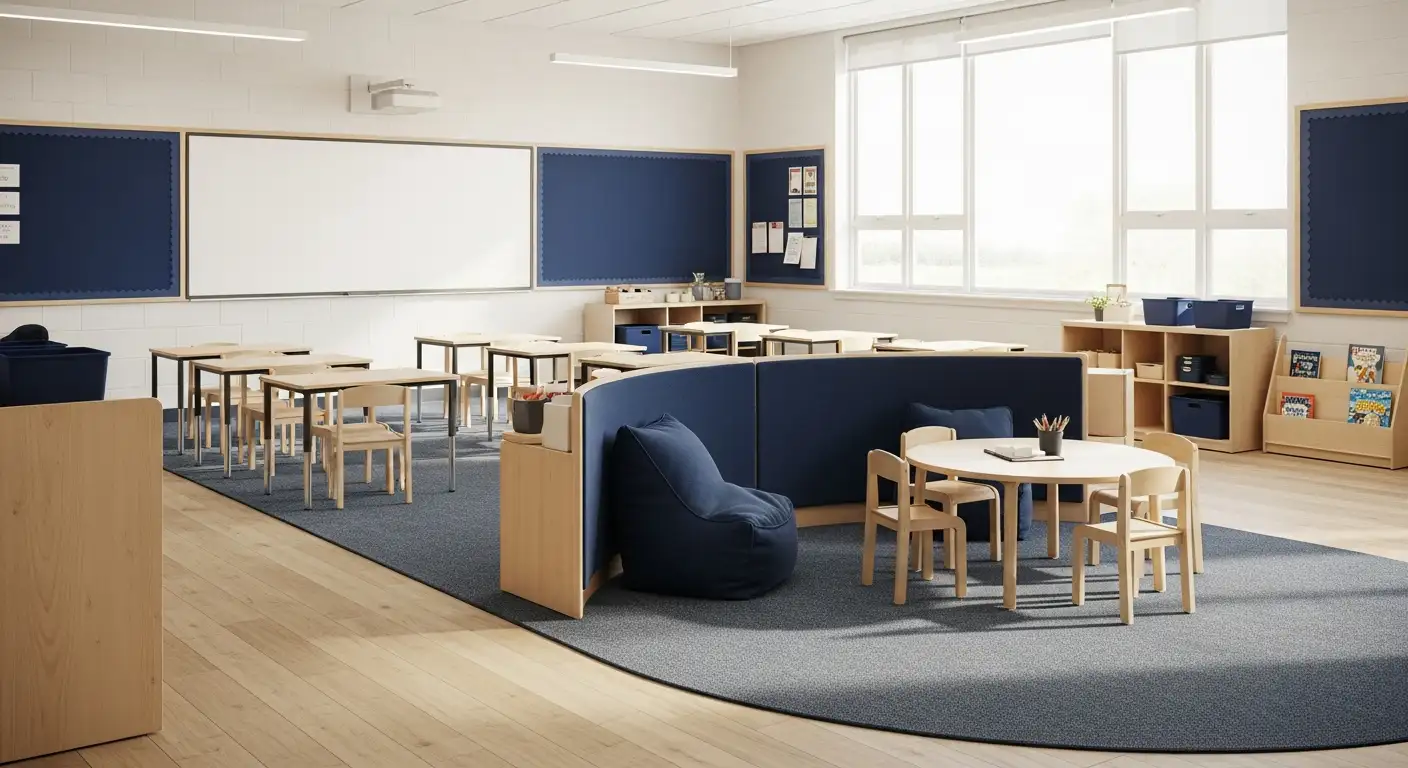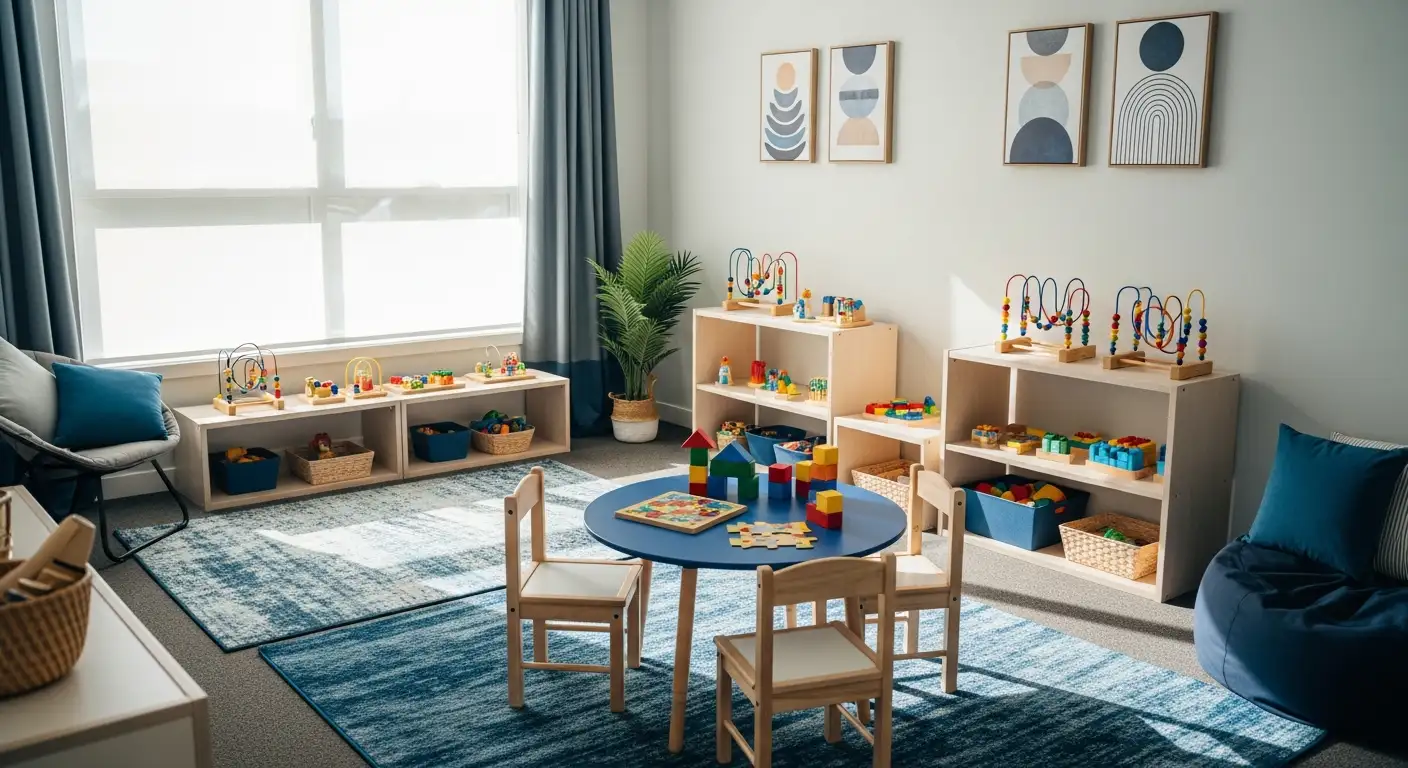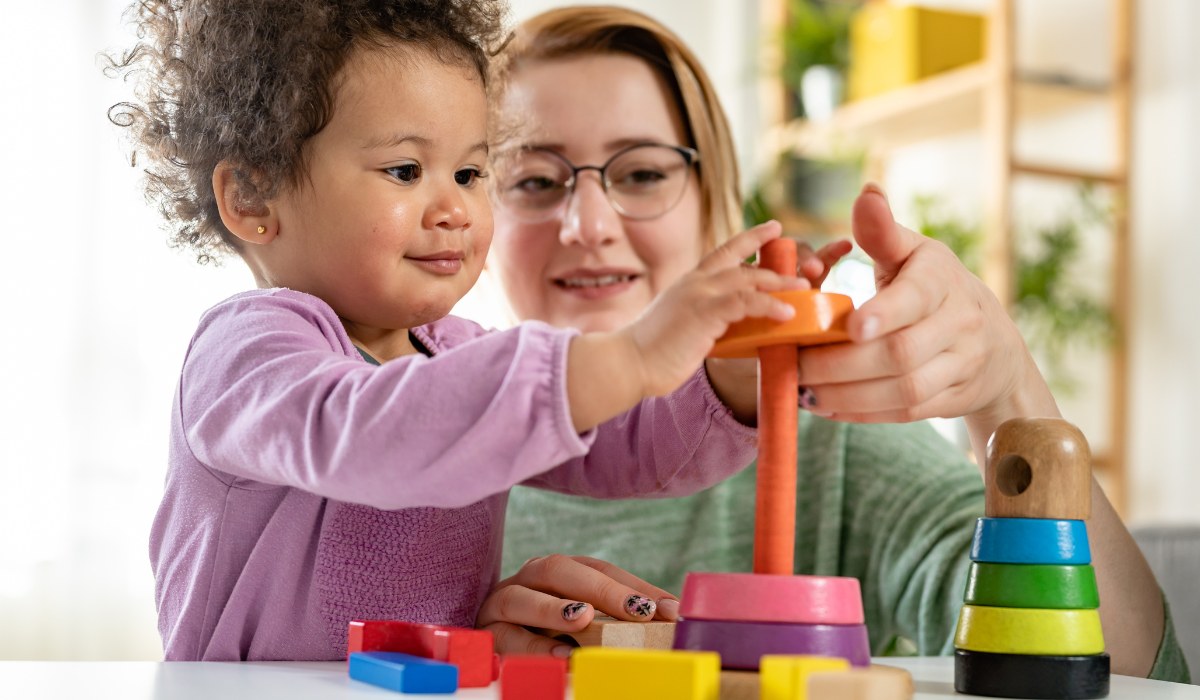Supporting Autistic Children Through Sensory Integration Therapy
Harnessing Sensory Integration Therapy to Improve Life for Autistic Children

Understanding the Need for Sensory-Based Interventions in Autism
Children with autism spectrum disorder (ASD) often face significant challenges processing sensory information, which can lead to difficulties in daily functioning and increased family stress. Sensory integration therapy (SIT), a play-based clinical approach, aims to help children better interpret and respond to sensory stimuli, thereby improving their ability to participate in everyday activities. This article explores the principles behind sensory integration therapy, its clinical effectiveness, and how it complements behavioral therapies like Applied Behavior Analysis to support autistic children's development and independence.
The Concept and Science Behind Sensory Integration Therapy
What is sensory integration therapy and how does it help children with autism?
Sensory integration therapy is a clinic-based intervention that uses play-focused sensory motor activities to improve how the brain processes and organizes sensory information like touch, movement, and sound. This approach helps children with autism who often have difficulty managing sensory input — whether they are overly sensitive or under-responsive — which can cause behaviors such as rocking, spinning, or hand-flapping.
By engaging children in controlled sensory activities (like swinging, climbing, or bouncing), therapists aim to help them better regulate sensory input, which can improve their attention, motor skills, and emotional regulation. Ultimately, the therapy supports greater participation in daily tasks and promotes independence.
The neurobiological basis of sensory integration
Sensory integration is an innate neurobiological process involving how the brain interprets information from the body's sensory systems. These systems include the tactile (touch), vestibular (balance and spatial orientation), and proprioceptive (body position and movement) senses. Proper integration of sensory input allows individuals to respond appropriately to the environment.
When sensory integration is disrupted, as it often is in autism spectrum disorder, individuals may overreact or underreact to sensory stimuli, leading to difficulties in behavior and adapting to daily life.
Sensory processing difficulties in autism
Approximately 90-95% of children with autism experience sensory processing difficulties. These challenges can limit their participation in everyday activities and may increase anxiety, behavioral problems, and family stress. Sensory integration therapy targets these difficulties by providing tailored, therapeutic sensory experiences aimed at normalizing sensory processing.
Common sensory systems involved
- Tactile system: Processes touch sensations, critical for feeling pressure, texture, and temperature.
- Vestibular system: Governs balance and coordination, helping with body movement and spatial orientation.
- Proprioceptive system: Involves sensing body position and movement in space, essential for motor control.
These systems develop from before birth and continue maturing through childhood. Dysfunction in any can contribute to difficulties in motor coordination, speech, behavior, and learning.
Manifestations of sensory integration dysfunction
Children with sensory integration challenges may show:
- Over- or under-reactivity to sensory stimuli.
- Repetitive movements like rocking or hand-flapping.
- Difficulties with emotional regulation and attention.
- Problems in motor coordination and social interactions.
Sensory integration therapy works to address these manifestations by organizing sensory input to promote more stable and adaptive responses.
History and development of sensory integration therapy
The concept was first introduced in the 1950s and 1960s by A. Jean Ayres, an occupational therapist and educational psychologist. She further developed and formalized the therapeutic approach in the 1970s, emphasizing the importance of sensory motor activities to facilitate brain processing of sensory information. Today, sensory integration therapy remains a prominent method, often delivered by occupational therapists, to support children with sensory processing difficulties, especially those on the autism spectrum.
Clinical Evidence Supporting Sensory Integration Therapy
What evidence supports the effectiveness of sensory integration therapy for autistic children?
Recent research provides growing support for sensory integration therapy (SIT) as a beneficial intervention for children with autism. A prominent study published in the Journal of Autism and Developmental Disorders, funded by Autism Speaks, focused on 32 children aged 4 to 8 who received sensory integration therapy alongside usual care over 10 weeks. Using reliable assessment tools such as the Sensory Integration Fidelity Measure and goal attainment scales, researchers found that children undergoing SIT exhibited notable improvements in daily functioning. They required less parental assistance with self-care and social situations, signaling enhanced independence.
Methodologies and assessment tools in SIT studies
The SenITA trial, a formal randomized controlled trial, evaluated manualized Ayres Sensory Integration therapy for children with autism who also have sensory processing challenges. Outcome measures included behavioral problems, adaptive skills, socialization, carer stress, and quality of life. In another study involving younger children aged 40 to 65 months, sensory integration therapy administered three times per week for six months was assessed with the Peabody Developmental Motor Scale (PDMS-2). This scale measured gross and fine motor skills before and after therapy, revealing significant motor skill improvements.
Improvements in daily function and motor skills
Findings consistently show that SIT enhances children's ability to process sensory information, which correlates with better participation in everyday activities. Improvements include motor coordination, self-care, social interaction, attention regulation, and reduced sensory overload behaviors. In several trials, children receiving SIT demonstrated greater independence and developmental gains compared to controls.
Outcome measures like goal attainment and adaptive skills
Goal attainment scales were prominently used to quantify progress in personalized objectives, with SIT groups scoring higher than comparison groups. Adaptive skills assessments reinforced these outcomes, highlighting SIT’s role in helping children meet practical, everyday challenges. These quantifiable benefits support SIT as a potentially effective therapy component in multidisciplinary autism care.
Limitations and future research directions
Despite positive findings, systematic reviews point to methodological limitations, including small sample sizes and inconsistent protocols. Some studies also mention adverse effects such as increased self-harm, underscoring the need for caution. Future research aims to use larger cohorts, standardized outcome measures, and longer follow-up periods to better determine SIT's long-term effectiveness and cost-efficiency.
Potential negative effects reported
While SIT is generally well-tolerated, there have been isolated reports of negative responses, including increased self-harming behaviors in some children. This emphasizes the importance of careful evaluation and individual tailoring by trained occupational therapists to ensure safety and benefit.
| Aspect | Description | Implication |
|---|---|---|
| Study Designs | RCTs like SenITA and longitudinal observational studies | Provide evidence but require further large-scale validation |
| Assessment Tools | Sensory Integration Fidelity Measure, Goal Attainment Scales, PDMS-2 | Allow objective measurement of sensory and motor improvements |
| Improvements Noted | Enhanced daily function, motor skills, socialization, reduced parental support needs | Support SIT’s relevance to autism therapy |
| Limitations | Small samples, methodological variability, need for long-term follow-up | Call for more rigorous trials and standardization |
| Reported Negative Effects | Occasional increased self-harm | Necessitates cautious application and monitoring |
How Sensory Integration Therapy Complements Behavioral Analysis Approaches
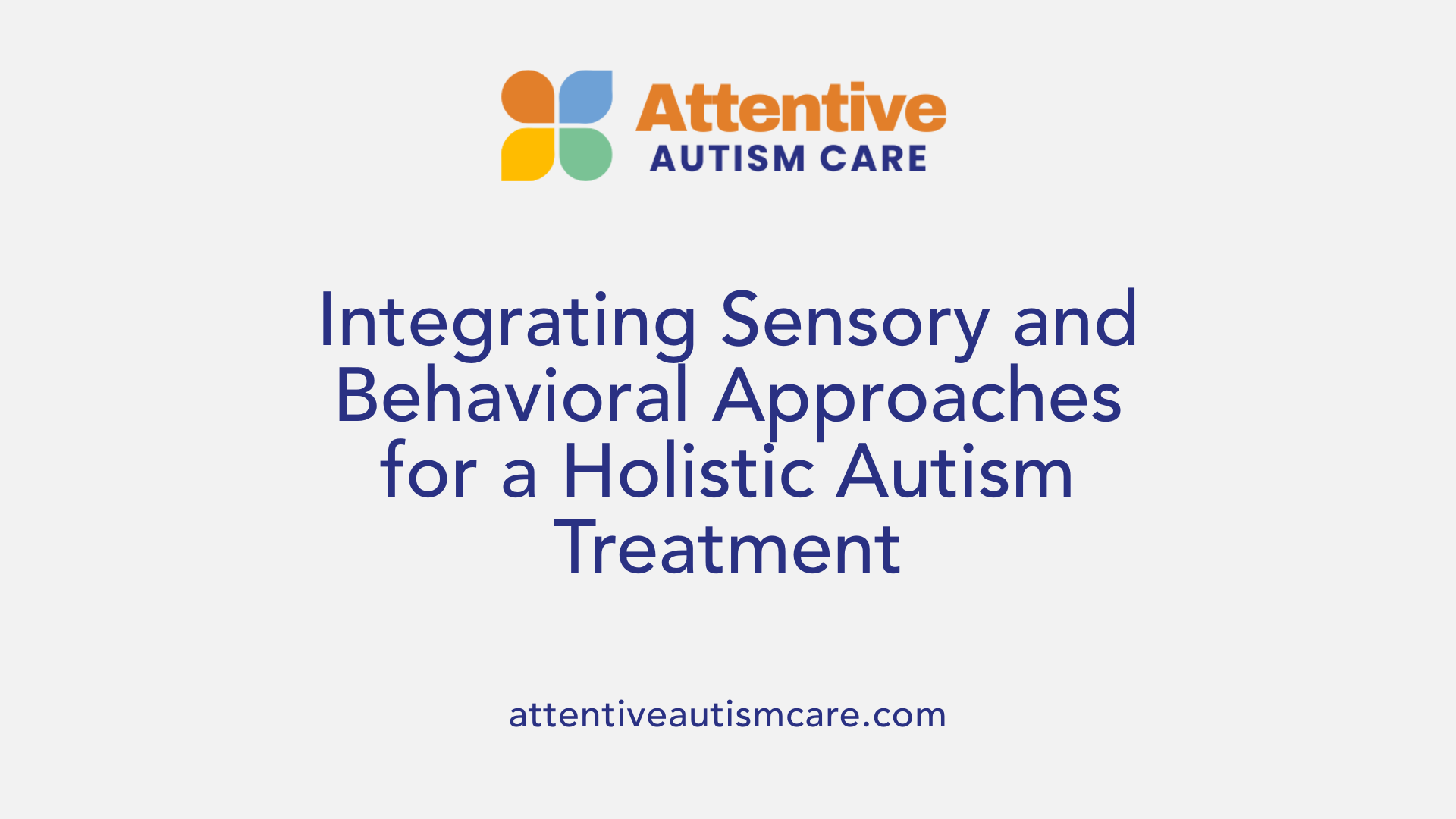
What is Applied Behavior Analysis (ABA) therapy and how does it help individuals with autism?
Applied Behavior Analysis (ABA) therapy is a scientifically supported approach that focuses on teaching important social, communication, and daily living skills to children with autism. It uses methods based on learning principles like positive reinforcement, skill chaining, and breaking down tasks into manageable steps, enabling children to acquire and maintain helpful behaviors. ABA therapy can improve language, emotional control, and independence, often delivered intensely by expert clinicians.
Who provides Applied Behavior Analysis therapy services?
ABA services are offered by licensed professionals such as Board Certified Behavior Analysts (BCBAs) who tailor treatment plans, and Registered Behavior Technicians (RBTs) who deliver therapy sessions with oversight. The team may also include psychologists, speech-language pathologists, and occupational therapists working together to provide individualized care. Treatment can take place in clinics, homes, or schools, ensuring accessibility.
What are the common techniques used in behavioral analysis therapies for autism?
Behavioral approaches frequently employ discrete trial training, which uses repeated practice to teach skills; behavioral chaining to address multi-step actions; and positive reinforcement with rewards or praise to motivate learning. Visual supports like picture schedules aid understanding, while prompting and gradual removal of prompts build independence. Modeling behaviors also helps improve social and communication abilities.
How do Sensory Integration Therapy (SIT) and ABA contrast and complement each other?
While ABA focuses on observable behaviors and teaching functional skills through structured learning, Sensory Integration Therapy addresses how children process sensory information such as touch, movement, and sound. SIT uses play-based, sensory-motor activities to help the brain respond to sensory input more adaptively, reducing sensory overload or under-responsiveness common in autism. Together, SIT and ABA provide a more comprehensive approach by addressing both the sensory processing challenges and teaching functional behaviors.
How are sensory and behavioral interventions integrated?
Many treatment plans incorporate both ABA and sensory therapies to support development. For example, occupational therapists may apply sensory integration techniques to prepare children for learning, improving their ability to focus and participate in ABA sessions. Coordinated efforts help children manage sensory sensitivities while acquiring communication and social skills, enhancing daily functioning and independence.
Providers of ABA and sensory therapies
ABA services are typically provided by behavior analysts and technicians, whereas sensory integration therapy is mainly delivered by occupational or physical therapists trained in sensory processing interventions. Collaboration among these professionals ensures that therapy is tailored to each child's needs, integrating sensory strategies with behavior-based skill teaching for maximal benefit.
Practical Implementation and Therapist Roles in Sensory Integration Therapy
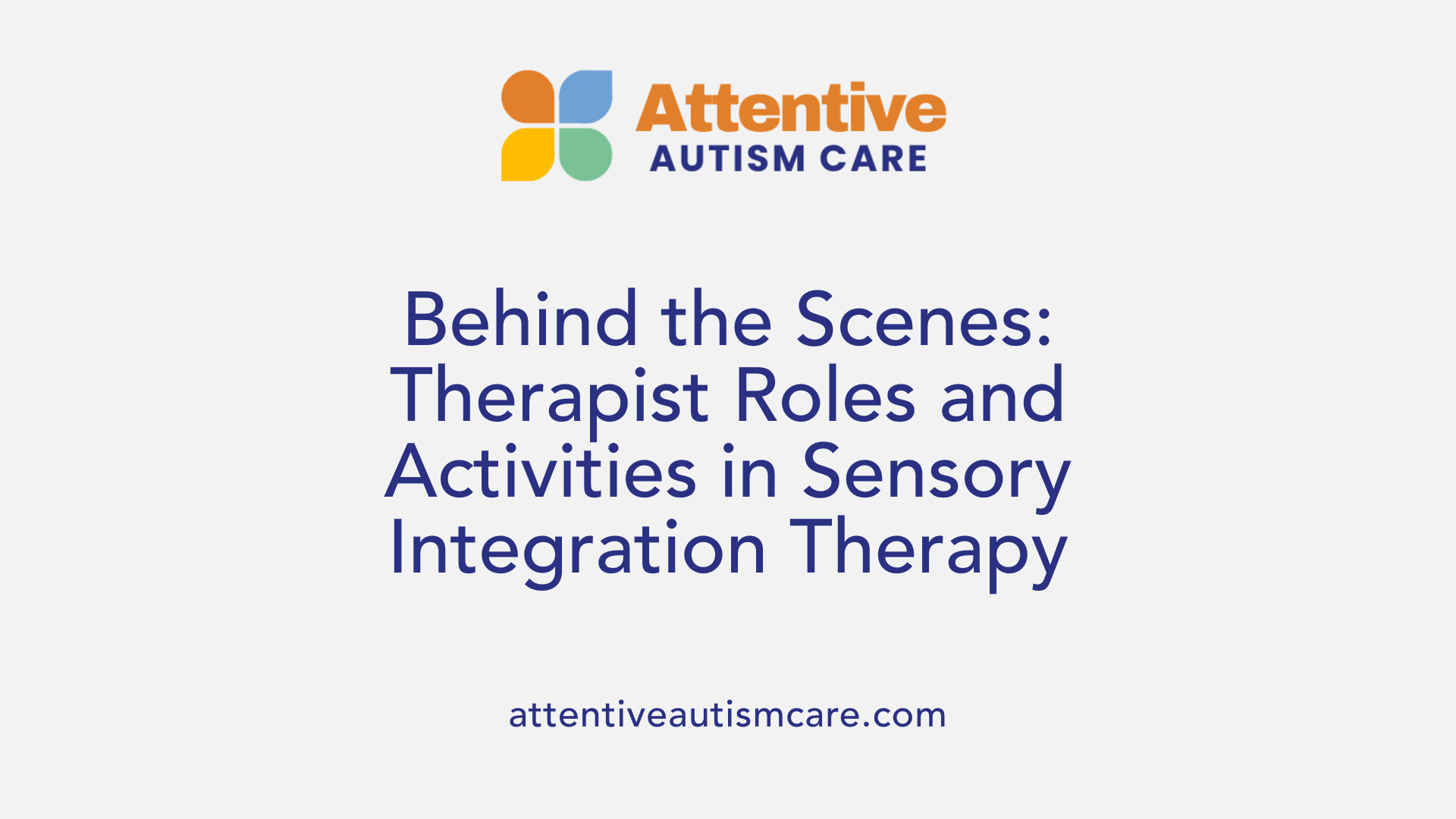
Assessment and Individualized Planning by Occupational Therapists
Sensory integration therapy begins with detailed assessments conducted by occupational therapists. These assessments help identify the specific sensory processing difficulties each child experiences, allowing for individualized therapy plans. Tools like the Sensory Integration Fidelity Measure guide therapists in ensuring treatment is tailored effectively.
Types of Sensory-Motor Activities Used
Therapy sessions involve various play-based, sensory-motor activities designed to engage and stimulate the child's sensory systems. Activities such as swinging, bouncing, climbing, and pressure touch are commonly used to promote sensory integration. These activities aid in reorganizing sensory input to improve the child's sensory processing.
Targeting Specific Sensory Systems
The therapy primarily targets key sensory systems, especially the tactile, vestibular (balance-related), and proprioceptive systems. These systems develop early and are crucial for motor coordination and behavioral responses. Addressing dysfunctions in these areas helps reduce behaviors like rocking, spinning, or hand-flapping common in autism.
Goals of Therapy Sessions
Sessions aim to improve the child’s ability to process and respond to sensory information adaptively, enhancing daily functioning. Therapy works toward better emotional regulation, motor skill development, social interaction, and greater independence. By improving sensory processing, children can participate more fully in everyday activities.
Importance of Neurodevelopmental Understanding
A thorough understanding of neurodevelopment underpins sensory integration therapy. Recognizing how the central nervous system organizes sensory input allows therapists to modulate stimuli effectively, promoting ordered responses and comfort.
Coordination with Families and Other Professionals
Therapists work closely with families and other healthcare professionals to support the child’s progress. Collaboration ensures therapy goals align with daily routines and other interventions, maximizing benefits and facilitating smoother transitions in different environments.
Impact of Sensory Integration Therapy on Daily Life and Family Well-Being
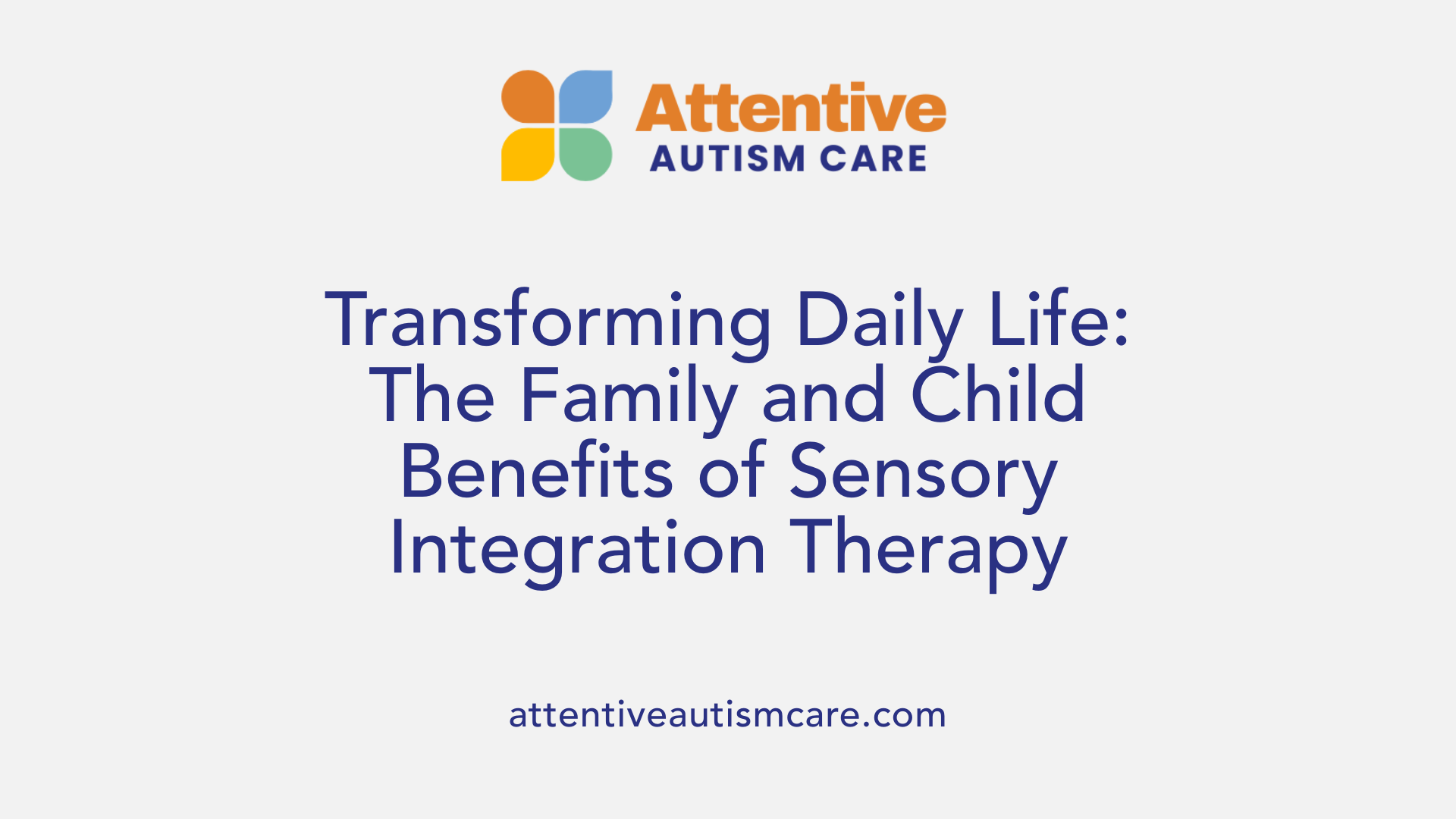
How Does Sensory Integration Therapy Improve Daily Functioning and Independence?
Sensory integration therapy (SIT) uses play-based activities to help children with autism better process sensory information such as touch, movement, and sound. Studies report that children receiving SIT show significant improvements in motor skills and greater independence in self-care tasks.
For instance, one 10-week study found that children receiving SIT required less parental assistance in daily routines and social situations, highlighting enhanced functional abilities. These gains help children participate more confidently in everyday activities.
How Does the Therapy Reduce Sensory Overload and Challenging Behaviors?
Children with autism often experience sensory processing difficulties that cause overload, leading to behaviors like rocking, spinning, or hand-flapping. SIT aims to regulate sensory input by targeting tactile, vestibular, and proprioceptive systems through activities like swinging and bouncing.
This intervention can reduce sensory-seeking behaviors and meltdowns by helping children modulate their response to sensory stimuli. Pressure-touch and movement exercises promote attention and lower anxiety levels.
In What Ways Does the Therapy Enhance Social Interactions and Emotional Regulation?
By improving sensory processing, SIT helps children handle complex sensory environments, which often trigger emotional responses. Enhanced sensory regulation supports better emotional control and reduces anxiety and behavioral outbursts.
Improved sensory integration also facilitates social engagement, enabling children to interact more effectively with peers during play and communication.
What Are the Effects on Family Stress and Caregiver Involvement?
Improvements in children's independence and regulation reduce the caregiving burden, easing family stress. Parents report lower levels of assistance needed and better child participation in social contexts.
Ongoing caregiver involvement remains essential, as consistent support and practice of learned sensory strategies at home help maintain progress.
What Is the Long-Term Outlook and Need for Monitoring?
While promising, current evidence highlights the need for more extensive research with longer follow-up periods to understand the persistence of benefits from SIT. Future studies aim to include broader outcome measures and cost-effectiveness analysis.
Regular monitoring by occupational therapists ensures that adjustments in therapy address evolving sensory needs and support sustained functional gains.
| Aspect | Impact of Sensory Integration Therapy | Details and Examples |
|---|---|---|
| Daily functioning & Independence | Improved motor skills; reduced parental assistance | 10-week study: Children showed higher goal attainment and self-care |
| Sensory overload & behaviors | Reduced sensory-seeking, meltdowns, and anxiety | Activities like swinging enhance sensory regulation |
| Social interactions & emotions | Enhanced emotional regulation and social participation | Better peer engagement due to improved sensory handling |
| Family stress & caregiver role | Lowered caregiver burden; increased child autonomy | Parents observe less need for support in daily tasks and socializing |
| Long-term outlook | Need for further research; ongoing therapy adjustments | Future work to assess persistence and cost-effectiveness |
A Path Forward in Supporting Sensory Integration for Autistic Children
Sensory integration therapy offers promising benefits for autistic children by addressing the core sensory processing difficulties that affect their daily functioning, emotional well-being, and social participation. While further rigorous research is needed to fully validate and optimize this approach, current evidence supports its use as part of a comprehensive intervention strategy. When combined with behavioral therapies such as Applied Behavior Analysis, and delivered by skilled multidisciplinary teams, sensory integration therapy plays a valuable role in empowering children on the autism spectrum to become more independent and engaged in their communities.
References
- Study finds sensory integration therapy benefits children ...
- Sensory integration therapy for children with autism and ...
- Sensory Integration in Autism Spectrum Disorders
- Effectiveness of sensory integration program in motor skills ...
- Benefits of Sensory Therapy for Autistic Individuals
- Sensory integration therapy & autism
- ABA Techniques: Strategies for Behavior Analysts - GSEP Blog

















